The world of education is undergoing a digital revolution, and eLearning is at the forefront. The days of boring lectures and old texts are long gone. Many eLearning formats provide an interesting and varied approach to learning new things while at home (or any place with an internet connection!). But with so many types of eLearning available, where do you even begin?
Fear not, knowledge seekers! This blog post will be your one-stop guide to the ten most popular types of eLearning, exploring their unique features and the benefits they offer.
1. Synchronous eLearning: Learning Together, Virtually
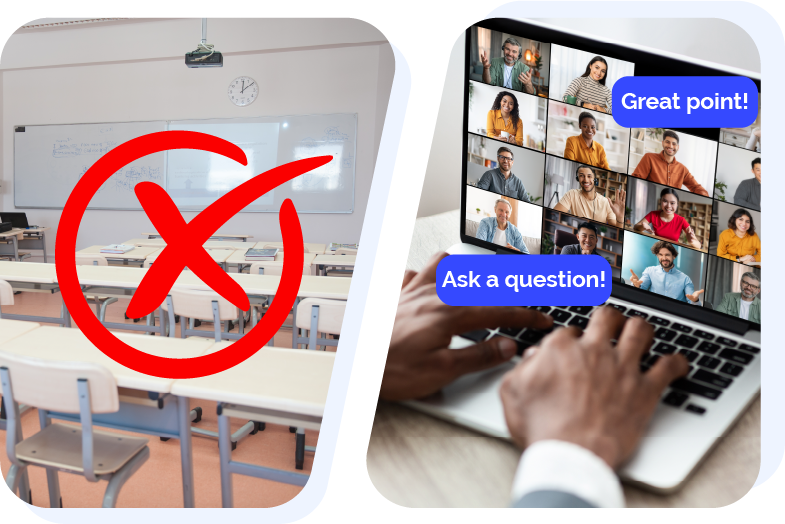
Imagine a classroom environment, but without the physical walls. That’s the beauty of synchronous eLearning. This type of eLearning provides a real-time learning experience where participants can interact with instructors and fellow learners simultaneously. Webinars, virtual classrooms, and live chat sessions are all examples of synchronous eLearning.
Benefits:
- Enhanced interaction: Ask questions, participate in discussions, and get immediate feedback from instructors and peers.
- Social engagement: Foster a sense of community and combat the feeling of isolation that can sometimes come with traditional online learning.
- Live instruction: Benefit from the expertise of a live instructor who can tailor the session based on the participants’ needs.
2. Asynchronous eLearning: Learning at Your Own Pace
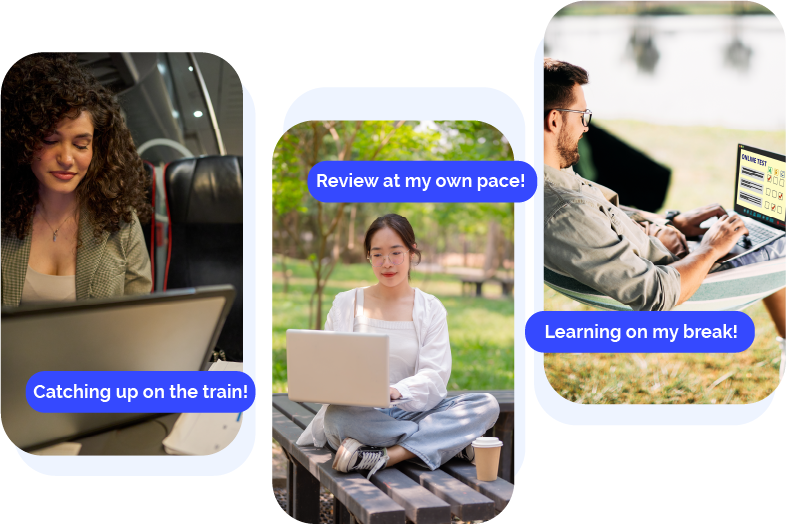
Flexibility is key in today’s fast-paced world, and asynchronous eLearning delivers. This type of eLearning allows you to access and complete course materials independently, whenever it suits your schedule. Think self-paced modules, video lectures, online quizzes, and downloadable resources all readily available at your fingertips.
Benefits:
- Convenience: Learn anytime, anywhere, at your own pace. Fit learning into your busy schedule without feeling rushed.
- Self-directed learning: Take charge of your education and concentrate on the subjects that require the greatest attention.
- Review and revisit: Go back and revise course materials as many times as you need to solidify your understanding.
3. Blended Learning
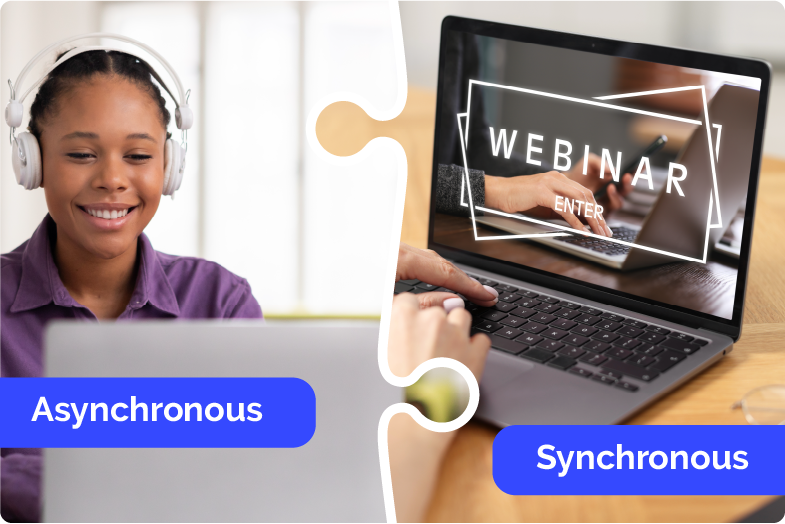
Blended learning, as the name suggests, combines the best aspects of synchronous and asynchronous eLearning. This type of eLearning might involve independent online modules, followed by group workshops or live Q&A sessions.
Benefits:
- Variety and engagement: Keep things interesting by incorporating different learning methods.
- Personalised learning: Caters to individual learning styles by offering both self-paced and instructor-led components.
- Reinforcement of knowledge: Allows for practical application of knowledge learned online through group activities or discussions.
4. Computer-Based Training (CBT): Interactive Software for Learning
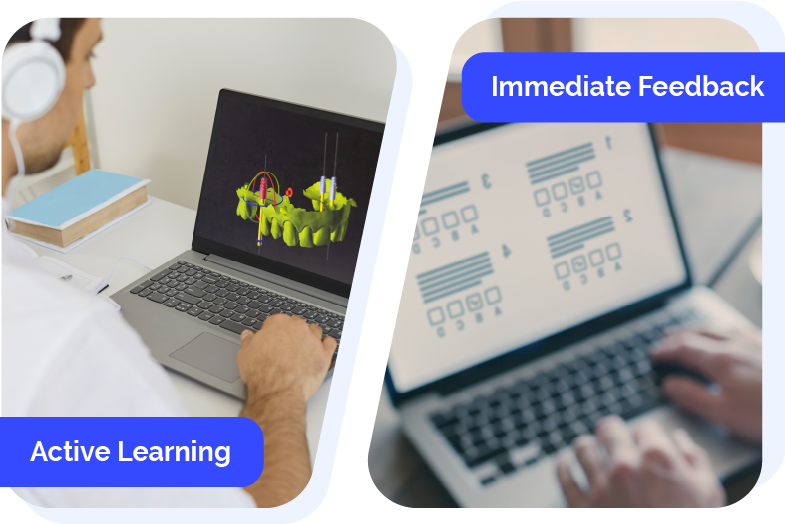
Remember those educational computer games you played in school? That’s a form of CBT! Interactive software is used in this type of eLearning to deliver educational materials. Tutorials, simulations, and branching scenarios are all common examples of CBT.
Benefits:
- Active learning: Engage with the learning material through simulations, decision-making scenarios, and interactive exercises.
- Immediate feedback: Get instant feedback on your progress and identify areas that require further attention.
- Standardised learning: Ensures consistent delivery of course content regardless of the instructor.
5. Web-Based Training (WBT): Learning Through Your Browser

Web-based training (WBT) is a broad category encompassing most online learning delivered through a web browser. This type of eLearning offers a vast array of learning materials, including video lectures, interactive quizzes, downloadable resources, and self-paced modules.
Benefits:
- Accessibility: Learn from anywhere with an internet connection, eliminating geographical limitations.
- Scalability: Easily deliver training to a large number of learners simultaneously.
- Cost-effective: Less expensive to develop and deliver compared to traditional classroom-based training.
6. Mobile Learning (mLearning): Learning on the Go!
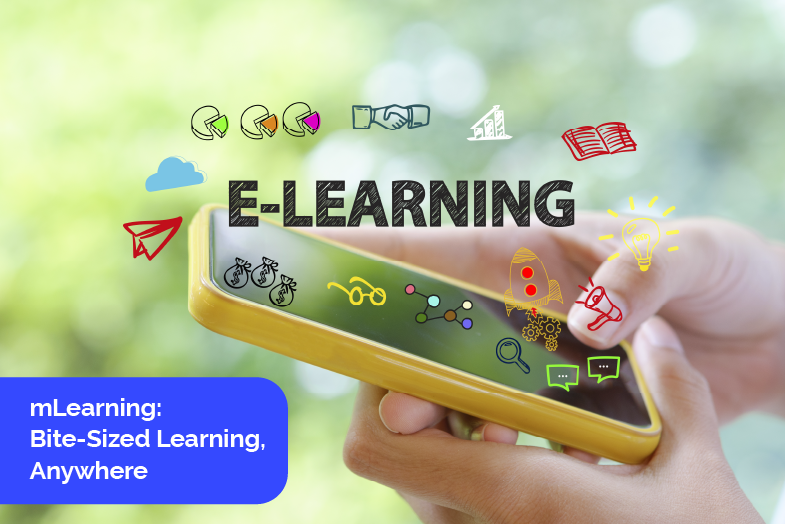
In our mobile-driven world, mLearning has become a game-changer. This type of eLearning is specifically designed for delivery on mobile devices like smartphones and tablets. Bite-sized learning modules, micro-lectures, and downloadable resources for offline access are all examples of mLearning.
Benefits:
- Microlearning: Learn in short bursts, perfect for busy schedules and fitting learning into small pockets of time.
- Convenience: Access learning materials anytime, anywhere, on your mobile device.
- Accessibility: Ideal for geographically dispersed learners or those in remote locations.
7. Microlearning: Bite-Sized Knowledge for Busy Bees
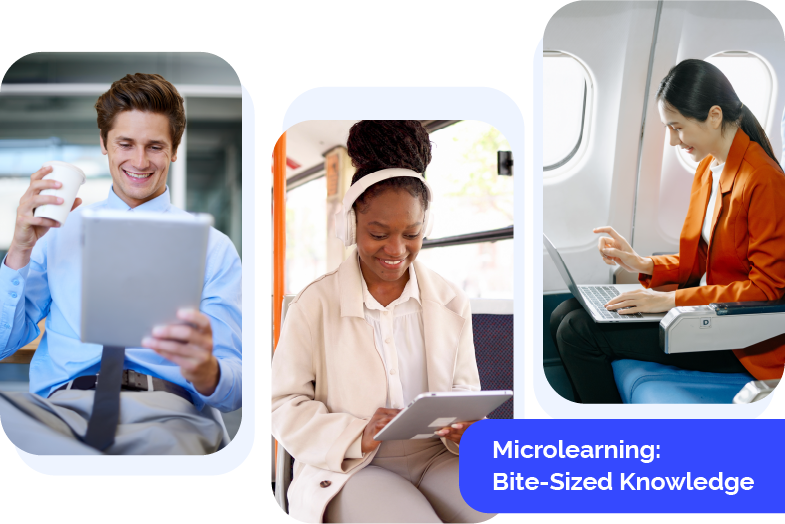
Delivering brief learning modules that concentrate on particular abilities or ideas is the main goal of microlearning. These modules are typically short, lasting a few minutes or less, and can be easily completed on mobile devices during commutes, coffee breaks, or any other small window of free time.
Benefits:
- Focus and retention: Shorter learning bursts enhance focus and improve knowledge retention.
- Easy to digest: Smaller chunks of information are easier to understand and remember than lengthy lectures.
- Reinforcement and repetition: Microlearning modules are easily repeated for spaced repetition, which helps to gradually solidify knowledge.
8. Gamification: Learning Transformed into a Game
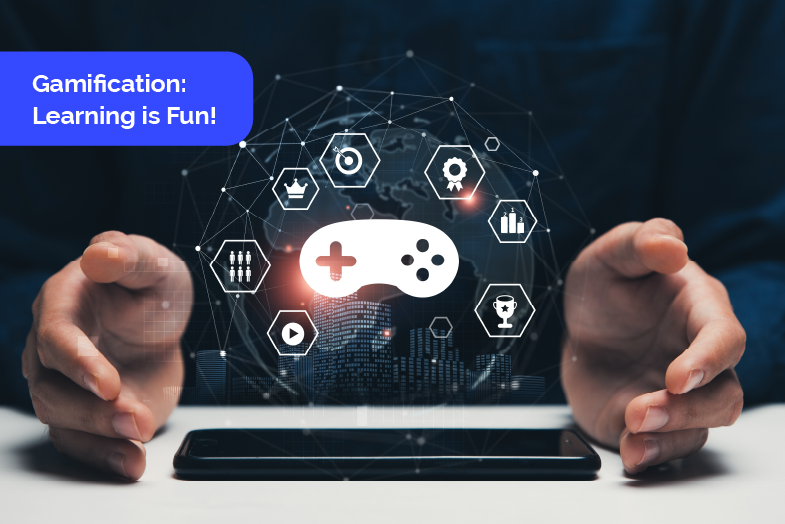
Gamification adds a dash of excitement and rivalry to the educational process. In order to keep learners interested and inspired to keep going, this kind of eLearning uses game features like points, badges, leaderboards, and challenges.
Benefits:
- Increased engagement: Game elements make learning more interactive and enjoyable, encouraging active participation.
- Motivation and competition: Leaderboards and challenges foster a sense of healthy competition, driving learners to strive for mastery.
- Immediate feedback: Points and badges provide instant feedback on learner progress, keeping them motivated.
9. Scenario-Based Learning: Putting Theory into Practice
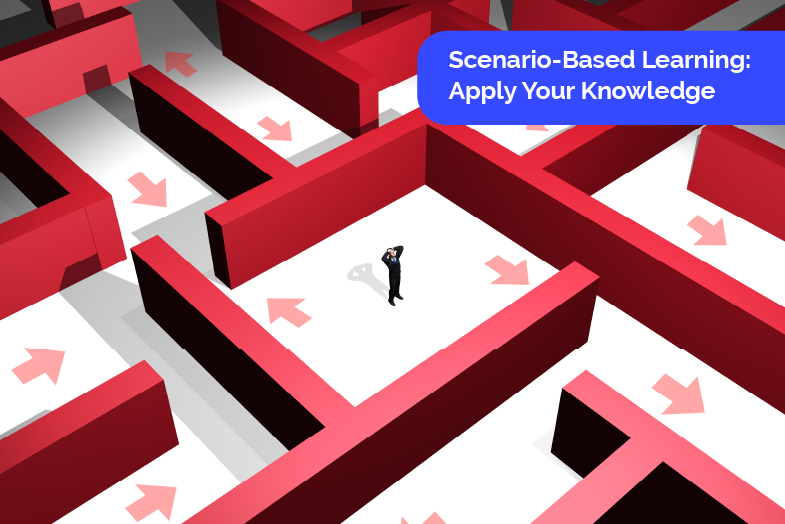
Scenario-based learning throws learners into realistic or hypothetical situations, allowing them to apply their knowledge and develop critical thinking and problem-solving skills. This type of eLearning can involve branching scenarios, simulations, and case studies.
Benefits:
- Practical application: Apply their theoretical knowledge to practical situations, which promotes comprehension.
- Decision-making skills: Critical thinking abilities can be developed through decision-making and consequence analysis.
- Improved problem-solving: Learn to analyse problems, identify solutions, and make informed decisions.
10. Video-Based Learning: The Power of Visual Storytelling
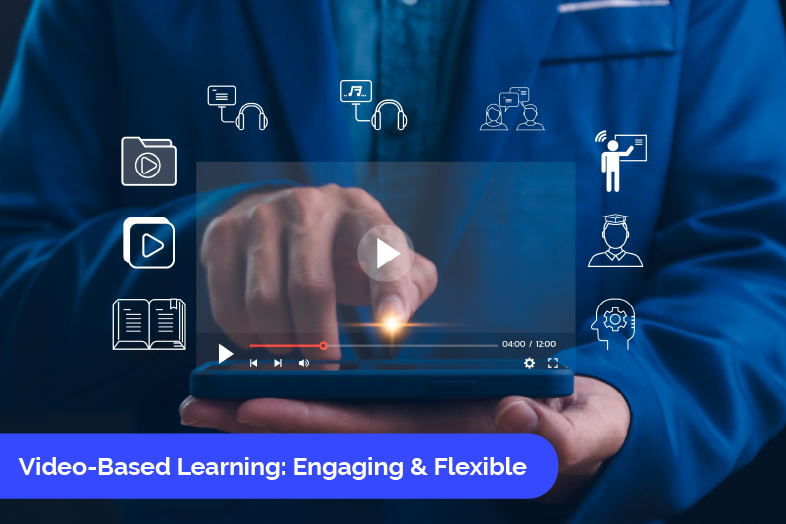
Video is a powerful learning tool, and video-based learning capitalises on this strength. This type of eLearning utilises videos as the primary mode of instruction, encompassing explainer videos, recorded lectures, demonstrations, and interactive video modules.
Benefits:
- Engaging and visually stimulating: Videos capture attention and keep learners engaged through visuals, storytelling, and demonstrations.
- Accessibility for diverse learners: Caters to visual learners who benefit from watching and observing.
- Flexibility: Videos can be easily accessed on various devices and platforms, making learning convenient.
Embrace the Power of Different Types of eLearning
As you’ve seen, there are many types of eLearning available, each with its own unique strengths and benefits. Whether you crave live interaction, prefer self-paced learning, or want to learn on the go, there’s an eLearning format perfectly suited to your needs. So ditch the outdated textbooks and explore the exciting world of eLearning! With its flexibility, accessibility, and engaging nature, eLearning can unlock new skills, boost your knowledge, and empower you to achieve your learning goals.
Ready to embark on your eLearning journey? A wide variety of eLearning courses on a range of topics are available on numerous platforms. Do some research to find a platform that aligns with your learning style and interests. Happy learning!




